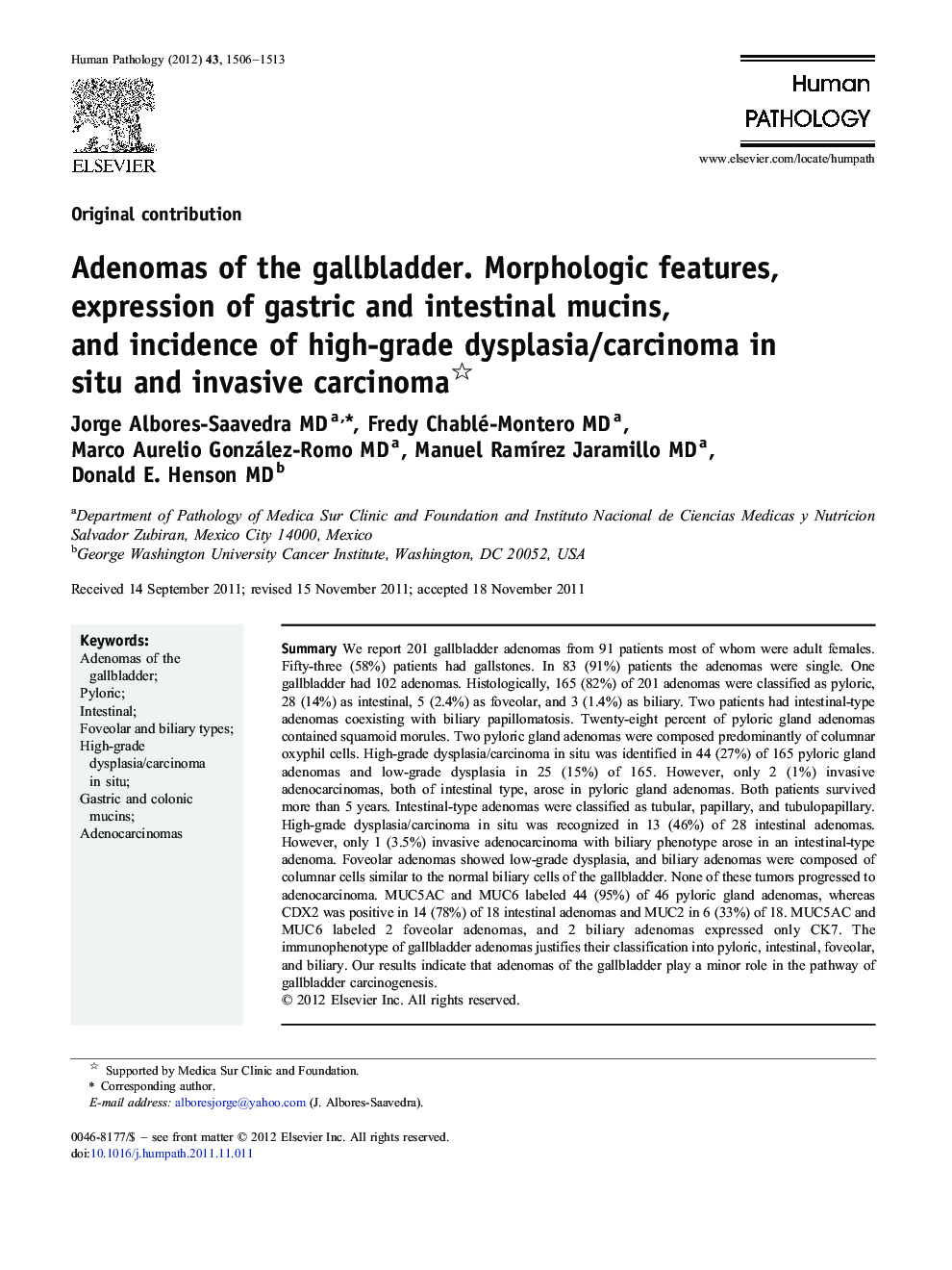| کد مقاله | کد نشریه | سال انتشار | مقاله انگلیسی | نسخه تمام متن |
|---|---|---|---|---|
| 4133395 | 1271417 | 2012 | 8 صفحه PDF | دانلود رایگان |

SummaryWe report 201 gallbladder adenomas from 91 patients most of whom were adult females. Fifty-three (58%) patients had gallstones. In 83 (91%) patients the adenomas were single. One gallbladder had 102 adenomas. Histologically, 165 (82%) of 201 adenomas were classified as pyloric, 28 (14%) as intestinal, 5 (2.4%) as foveolar, and 3 (1.4%) as biliary. Two patients had intestinal-type adenomas coexisting with biliary papillomatosis. Twenty-eight percent of pyloric gland adenomas contained squamoid morules. Two pyloric gland adenomas were composed predominantly of columnar oxyphil cells. High-grade dysplasia/carcinoma in situ was identified in 44 (27%) of 165 pyloric gland adenomas and low-grade dysplasia in 25 (15%) of 165. However, only 2 (1%) invasive adenocarcinomas, both of intestinal type, arose in pyloric gland adenomas. Both patients survived more than 5 years. Intestinal-type adenomas were classified as tubular, papillary, and tubulopapillary. High-grade dysplasia/carcinoma in situ was recognized in 13 (46%) of 28 intestinal adenomas. However, only 1 (3.5%) invasive adenocarcinoma with biliary phenotype arose in an intestinal-type adenoma. Foveolar adenomas showed low-grade dysplasia, and biliary adenomas were composed of columnar cells similar to the normal biliary cells of the gallbladder. None of these tumors progressed to adenocarcinoma. MUC5AC and MUC6 labeled 44 (95%) of 46 pyloric gland adenomas, whereas CDX2 was positive in 14 (78%) of 18 intestinal adenomas and MUC2 in 6 (33%) of 18. MUC5AC and MUC6 labeled 2 foveolar adenomas, and 2 biliary adenomas expressed only CK7. The immunophenotype of gallbladder adenomas justifies their classification into pyloric, intestinal, foveolar, and biliary. Our results indicate that adenomas of the gallbladder play a minor role in the pathway of gallbladder carcinogenesis.
Journal: Human Pathology - Volume 43, Issue 9, September 2012, Pages 1506–1513